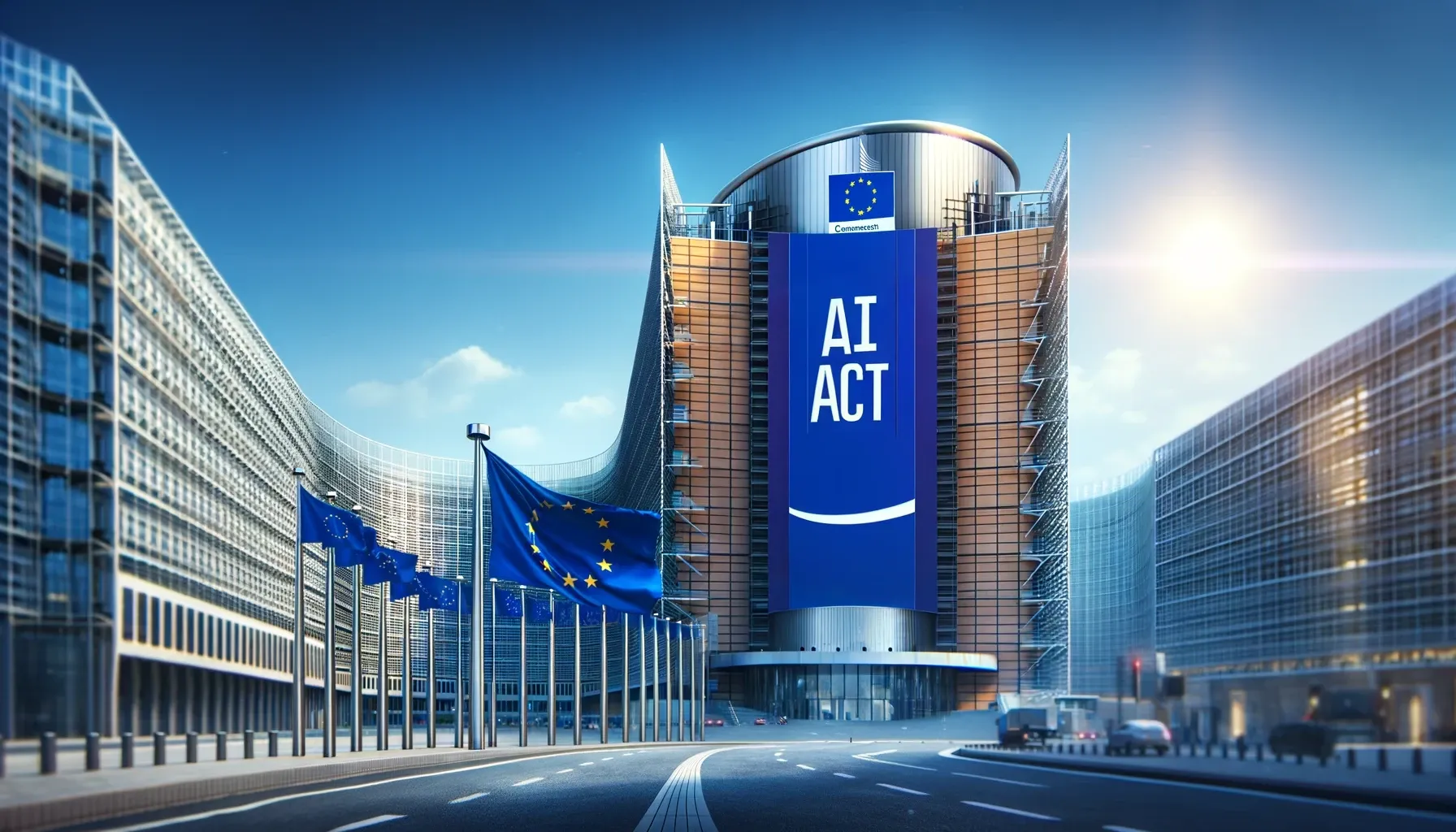Introduction: The Crucial Role of Compliance in AI Adoption by Nonprofits
As artificial intelligence (AI) becomes increasingly integrated into the nonprofit sector, understanding and adhering to AI regulations is crucial. This compliance ensures that organizations leverage this technology ethically and legally. The potential of AI to transform operations through improved decision-making and enhanced engagement with stakeholders is immense, yet it brings critical challenges in compliance and ethical usage.
Nonprofits are adopting AI for various innovative purposes, such as data analysis for informed decision-making, personalized donor communications, and operational efficiencies. However, these advancements come with significant risks and ethical considerations. Nonprofits must navigate these challenges carefully to avoid biases in AI algorithms and uphold data privacy, ensuring they maintain public trust.
Navigating the Evolving AI Regulatory Landscape in Europe
The regulatory landscape for Artificial Intelligence (AI) is rapidly evolving, with significant strides made particularly by the European Union (EU) through its pioneering AI Act. This comprehensive legal framework aims to ensure AI systems respect fundamental rights, safety, and ethical principles, thereby setting a global benchmark. As AI technologies permeate every sector, understanding this regulatory framework becomes crucial, especially for nonprofits operating internationally.

Categorization and Regulation According to Risk
The EU's AI Act introduces a nuanced categorization of AI systems based on the risk they pose:
- Unacceptable Risk: Certain AI practices are outright prohibited. These include AI systems that deploy manipulative or deceptive techniques which could significantly harm individuals’ decision-making capabilities. Examples include exploitative AI targeting vulnerable demographics and social scoring systems.
- High-Risk: This category forms the core focus of the regulation, requiring stringent compliance measures. High-risk applications are prevalent in sectors like employment and law enforcement, where they must undergo thorough assessments prior to deployment.
- Limited Risk: AI systems like chatbots or those capable of generating deepfakes entail lighter obligations, primarily centered around transparency to ensure users are aware they're interacting with AI.
- Minimal Risk: The majority of AI applications, such as AI-enabled video games or spam filters, remain largely unregulated, reflecting their lower perceived threat to users' rights and safety.
To use an example from previous articles, AI hallucinations (instances where AI systems generate false or misleading information) pose significant threats to the reliability of nonprofit operations. The EU addresses these concerns by introducing stringent requirements for transparency and human oversight, particularly for high-risk AI applications. Nonprofits should implement diverse training datasets, thorough model validation practices, and maintain human oversight to mitigate these risks.
Broader Obligations, Support Mechanisms, and Implications for Nonprofits
The AI Act lays significant responsibilities on both providers and deployers of AI systems. The Act stipulates requirements for General Purpose AI (GPAI) systems, which are capable of performing a broad range of tasks and can be integrated into various downstream applications. Providers of such systems must adhere to detailed documentation and compliance standards, especially those posing systemic risks.
- Providers of High-Risk AI Systems must ensure their products are designed for accuracy, robustness, and cybersecurity throughout their lifecycle. They must also manage risks and establish quality management systems to consistently meet regulatory standards.
- Deployers (Users) of High-Risk AI Systems have lesser, yet significant, obligations to ensure their use of AI aligns with the EU's regulatory expectations.
For nonprofits, particularly those with limited resources, navigating these classifications and complying with the associated regulations can be daunting. High-risk AI systems, for instance, require a conformity assessment before deployment—a process that could be resource-intensive and technically challenging. Non-compliance not only risks legal repercussions but can also erode donor trust, crucial for sustained nonprofit operations. To mitigate these challenges, it is essential for nonprofits to:
- Develop Structured Compliance Strategies: Understanding which category an AI system falls into and the specific obligations this entails is critical.
- Engage with Legal and Technical Experts: This can provide clarity on compliance requirements and practical steps toward adherence.
- Participate in Proactive Initiatives: Engaging in frameworks like the EU’s AI Pact could help organizations prepare and comply with regulations ahead of their full enforcement.
Addressing AI Risks and Compliance in the United States
In the U.S., President Biden's Executive Order on AI emphasizes safety, equity, and privacy. It mandates that developers of significant AI systems disclose safety test results and comply with new standards to protect Americans. These initiatives highlight the importance of ensuring AI systems are secure and trustworthy before public deployment.

The implications of President Biden's Executive Order on AI for nonprofit organizations are significant and multifaceted. Nonprofits working in advocacy, civil rights, healthcare, and education can leverage these new regulations to enhance their services and advocate for ethical AI use. By aligning with the order’s emphasis on safety, equity, and privacy, nonprofits can help ensure that AI technologies are developed and deployed in ways that protect and benefit all sectors of society.
Ensuring AI Safety and Security
The Executive Order mandates significant new measures aimed at safeguarding Americans from the potential dangers of AI. Developers of influential AI systems must now disclose their safety test outcomes and other vital information to the U.S. government. This is part of a broader initiative that includes stringent safety and security standards spearheaded by the National Institute of Standards and Technology, which involves extensive red-team testing before public deployment. These protocols extend to critical infrastructure, with the Department of Homeland Security establishing an AI Safety and Security Advisory Board (AISSB) to uphold these standards.
Promoting Privacy, Preventing Abuse, and Advancing Civil Rights
AI's capability to process and analyze vast amounts of data poses unique challenges to privacy. The Executive Order responds by encouraging the development and use of privacy-preserving technologies, such as advanced cryptographic tools, which will allow AI systems to be trained while safeguarding the privacy of the data used. Furthermore, the President has called on Congress to enact bipartisan data privacy legislation, aiming to fortify protections against the misuse of AI in extracting and exploiting personal information.
AI technologies have the potential to perpetuate discrimination and bias, influencing areas such as justice, healthcare, and housing. The Executive Order builds on earlier initiatives, such as the Blueprint for an AI Bill of Rights, to combat algorithmic discrimination. It mandates clear guidelines for federal and private sectors to prevent AI from exacerbating inequality, ensuring AI advances do not undermine civil rights.
Supporting Consumer, Worker, and Educational Advancements
The directive also acknowledges AI's dual potential to both enhance and disrupt consumer experiences, workplaces, and educational environments. It outlines actions to harness AI in healthcare for developing affordable, life-saving treatments and improving educational tools through personalized learning experiences. Additionally, it addresses workplace challenges posed by AI, including surveillance and bias, promoting fair labor practices and collective bargaining.
Conclusion: Balancing AI Innovation with Ethical Compliance in Nonprofits
In conclusion, while AI offers substantial benefits to the nonprofit sector, its integration must be managed with a keen eye on compliance and ethics. Nonprofits must balance innovation with responsibility to effectively leverage AI advancements for social good. Organizations should evaluate their current AI use and compliance status and seek resources to enhance their understanding and capabilities in this area.
Nonprofits should stay informed about regulatory changes and adopt best practices for responsible AI implementation. This includes conducting regular risk assessments, ensuring data privacy, mitigating biases, and maintaining transparency in AI operations. Engaging in ongoing training and legal consultation is also vital for keeping up with AI regulations. Joining community forums and discussions on AI and technology can also foster a more informed and collaborative approach to these challenges.
As AI technology and its applications continue to evolve, so too will the regulations that govern them. Nonprofits should actively participate in shaping these regulations through advocacy and collaboration. By understanding and implementing these strategies, nonprofits can lead the way in responsible and effective AI utilization, setting a standard for ethical practices that extend beyond the sector.

